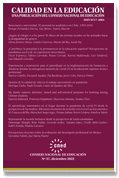Overview
DOI:
https://doi.org/10.31619/caledu.n57.1321Abstract
The health crisis due to the SARS-CoV-2 virus has affected the practices of future doctors, and social distancing significantly affected the training capacity of clinical fields. This makes it necessary to think of new forms of clinical practice combining technology and educational strategies. This is a randomized quasi-experimental study with a mixed methodology where a telepractice intervention was carried out, implemented, and evaluated. Telepractice is a practical activity using digital media, where a teacher with a student, transmits their attention through cameras or devices to another group of students who are in another physical location. The study was carried out on fourth-year Medicine students. There were no statistically significant differences when comparing the achievement of learning objectives between the group in telepractice and the control group (traditional practice). Although there is, in general, good satisfaction with the methodology, there are some aspects to improve, such as technical considerations of transmission audio and video. This study is the first of its kind in Chile to be carried out by implementing a telepractice methodology, comparing it to the traditionally known clinical tutorial teaching methodology, for the acquisition of clinical skills in undergraduate medical students.
Downloads
Published
Issue
Section
License
Authors retain their Copyright and only transfer a part of these to the journal, accepting the following conditions:
Authors keep their rights as authors and guarantee the right to the journal for the first publication of their work, which is simultaneously subject to the Creative Commons Attribution license allowing third parties to share the study accrediting the author and first publication in this journal.
Authors may adopt other non-exclusive license agreements for distribution of the version of the published work (e.g. inclusion in an institutional thematic file or publication in a monographic volume) accrediting initial publication in this journal.
Authors are allowed and recommended to share their work over the Internet (e.g. in institutional telematic files or their website) before and during the submission process, which may lead to interesting exchanges and increased citation of the published work. (See The effect of open access).

